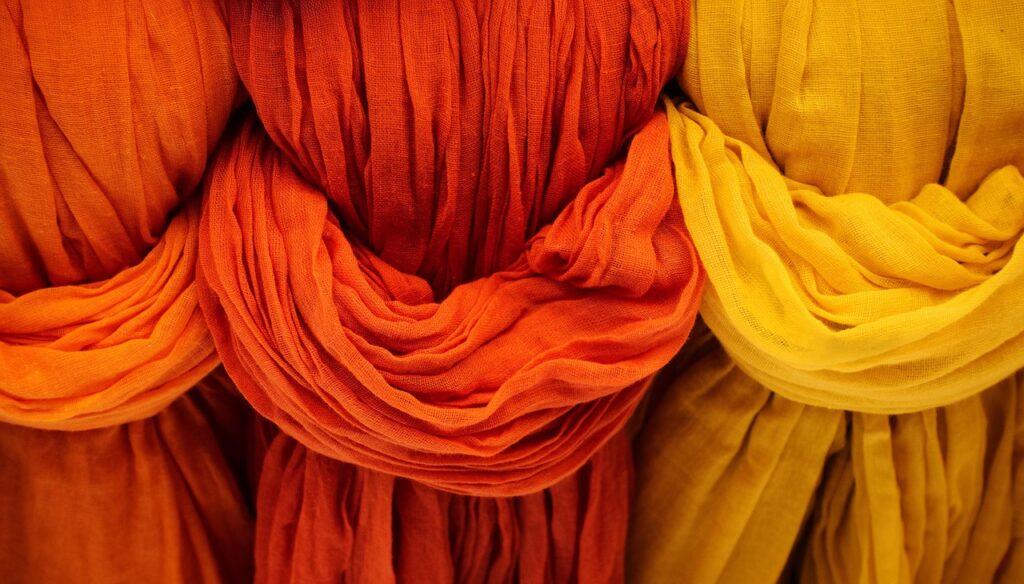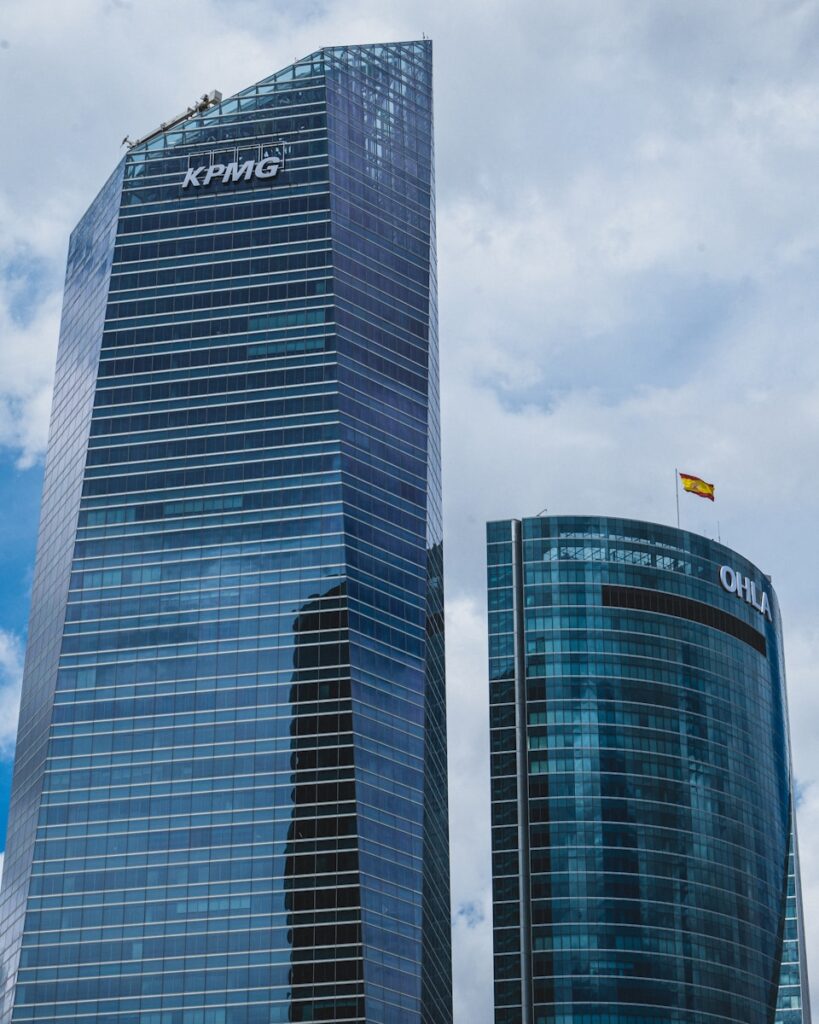The long-term preservation of costume and textile collections represents a fascinating intersection of art, history, and scientific endeavor. Unlike many other artifacts, textiles present a unique set of challenges due to their inherent diversity, ranging from the organic nature of their materials to the intricate structures and embellishments that define them. Successfully maintaining these delicate historical treasures for future generations requires a deep understanding of their composition, their vulnerabilities, and the environmental factors that constantly threaten their integrity.
This comprehensive guide, informed by expert knowledge in preventive conservation, explores the essential principles and practices crucial for safeguarding textile heritage. We delve into the fundamental characteristics that make textiles so susceptible to deterioration, examine the diverse array of fibers and fabric structures, and uncover the intrinsic vulnerabilities often embedded within their very creation.
Join us on a journey through the meticulous world of textile preservation, as we illuminate the complex interplay of factors that contribute to their degradation and lay the groundwork for effective, informed conservation strategies. Understanding these foundational elements is the first, most critical step in ensuring that the stories woven into these fabrics endure.

1. **Understanding the General Characteristics of Textiles**Textiles possess several general characteristics that profoundly influence their preservation needs. Primarily, their organic nature, derived from natural materials, makes them inherently prone to natural processes of deterioration. Exposure to ambient levels of light, temperature, humidity, dust, and airborne pollutants, alongside the wear and tear of use, initiates a gradual decline that preventive conservation measures can only slow, not halt entirely. While most are organic, textiles can also incorporate inorganic materials such as glass, asbestos, and metal, adding further complexity to their care.
Another defining feature is their fibrous structure. Fibres, the long, fine, rod-like components twisted into yarns, expose a large surface area to the environment. This extensive exposure makes textiles highly susceptible to the damaging effects of harmful substances in the air and surrounding materials. The intricate network of these fibers is the very foundation of a textile’s existence, yet it is also a gateway for environmental assault.
Flexibility is perhaps their most obvious characteristic, and ironically, a source of vulnerability. By their nature, textiles are incredibly flexible and generally cannot retain their shape without external support. This inherent pliability leaves them susceptible to distortion, crumpling, and creasing, which, if prolonged, can become permanently set. Severe creasing, especially in aged and weakened textiles, can even lead to splits in the fabric. Unlike rigid objects like paintings or ceramics, costumes, in particular, may be stored flat but are frequently displayed three-dimensionally, necessitating different approaches to support, volume, and dimension.
Furthermore, most textiles are absorbent and porous. This quality, while often desirable in their original function, means they can readily become soiled or stained by their surroundings. This absorbency can also make them vulnerable to moisture-related damage. Finally, the everyday familiarity with textiles often leads to casual handling, a practice completely unsuitable for museum artifacts. Historical textiles cannot be handled or cleaned with the same impunity as contemporary clothing without significant risk of damage, demanding a specialized, careful approach that acknowledges their fragility and historical significance.
Read more about: Unveiling Cannabis: A Comprehensive Exploration of Its Botanical Nature, History, and Diverse Applications

2. **Identifying the Most Common Textile Fibres**Textile collections in museums are predominantly composed of fibres classified as either natural or manufactured, each with distinct properties and preservation considerations. Natural fibres originate from plants or animals. Plant fibres, often called cellulosic fibres due to cellulose being their major component, include cotton and linen, which are prevalent in Western museum collections. Other varieties like hemp, jute, ramie, sisal, and coir have been used globally. These fibers retain some of their natural properties after processing, influencing their long-term stability.
Animal fibres, or protein fibres, come from animal coats, such as sheep’s wool, or insect exudates, like silk from the silk moth larva. The original biological function of these fibers often dictates their structure, properties, and ultimately, their long-term preservation needs. Understanding these inherent qualities is paramount to their care.
Among the most common natural fibres, cotton is a vegetable fibre known for its absorbency, a property linked to its original function of accumulating moisture for the seed. While new cotton is stronger when wet, older cotton may not exhibit this strength. Cotton fabrics are also prone to wrinkling, shrinkage, and can yellow over time. Flax, processed to produce linen, boasts a lustrous appearance due to its waxes and long, smooth fibres. New linen is strong, absorbent, and quick-drying, but it has low resiliency and wrinkles easily. Repeated folding of linen can cause fibres and yarns to break at crease lines.
Wool, an animal protein fibre, offers excellent insulation and moisture absorption, capable of holding up to one-third of its weight in water without feeling damp. However, wool fibres are relatively weak, and significantly weaker when wet, making them susceptible to damage. Their crimped molecular structure provides elasticity, but the overlapping scales on their outer surface can interlock with moisture, heat, and mechanical action, leading to felting. Silk, derived from silkworm larva, forms a strong, fine filament of fibroin protein coated with sericin. Though strong and absorbent, silk fibres weaken when wet and are notably sensitive to light, a critical factor in their long-term preservation.
Manufactured fibres, developed more recently, are produced by extruding a liquid polymer through a spinneret. These can be modified natural polymer fibres, like rayon, which are chemically converted cellulose, or synthetic fibres, such as nylon, polyester, and acrylic, created directly from chemicals. Rayon, for example, is more absorbent but much weaker than cotton, particularly when wet. Synthetic fibres, introduced from the 19th and 20th centuries onwards, exhibit varied properties depending on their raw materials and manufacturing processes; nylon, for instance, has poor sunlight resistance, while acrylic boasts good resistance. These diverse characteristics necessitate tailored preservation approaches.

3. **Recognizing Various Fabric Structures and Their Vulnerabilities**Beyond the fibres themselves, the way textiles are constructed into fabrics significantly impacts their preservation and vulnerabilities. Woven textiles, for example, are created by interlacing two sets of yarn: the warp, held under tension and parallel, and the weft, worked perpendicularly over and under the warp. A finished edge, known as a selvedge, forms where the weft doubles back, indicating the original width of the cloth. Warp yarns are typically stronger due to the tension they endure during weaving. The fabric’s greatest stretch occurs in the bias direction, where warp and weft lie parallel when folded at an angle, making bias-cut garments particularly prone to distortion if not stored correctly.
There are three basic weave structures: plain, twill, and satin, with most others being variations. Each has specific implications for preservation. Satin weave, characterized by long floating yarns on the fabric surface, achieves a smooth, lustrous appearance. However, these floating yarns can easily be pulled out of alignment, irreversibly altering the fabric’s lustre and even its color. Similarly, the raised pile of fabrics like velvet is highly susceptible to crushing and distortion, with even minor disruptions becoming quite noticeable. Certain fabrics are also prone to irreversible shrinkage, either due to the fibre type, yarn (like overtwisted crepe), or loose weave structure, especially during washing and drying.
Knitted textiles, formed by interlooping yarns, offer wrinkle resistance, form-fitting qualities, and stretchiness. This inherent flexibility, however, also makes them easily deformable. If hung vertically for display or storage, knits can stretch out of shape, often irreversibly. This necessitates specific handling and support mechanisms to maintain their original form.
Non-woven textiles, such as felt, are made directly from fibres through bonding or interlocking, often mechanically or thermally. While they do not unravel when cut, they are inelastic and will not regain their original shape if stretched. Historically made from wool, modern felts can incorporate blends of natural and manufactured fibres. Other textile techniques, including crocheting, lacemaking, and netting, also present unique challenges. Delicate fabrics like netting, commonly found in veils, and lace, with their many open areas, are highly susceptible to snagging and tearing, demanding extreme care in handling and storage.
Read more about: The 13 Critical Welding Defects That Can Turn Your Weight Bench Into a Money Pit: A Guide to Avoid Structural Failure

4. **The Influence of Dyes, Finishes, and Embellishments**Textiles are rarely found in their raw state; their aesthetic and functional qualities are often enhanced by a myriad of dyes, finishes, and embellishments, each introducing unique preservation considerations. Since antiquity, textiles have been colored using dyes, which, until the late 19th century, were exclusively sourced from natural origins such as plants, shellfish, and insects. Dyes can be applied at various stages—to fibres, yarns, fabrics, or finished articles—typically through immersion in a dye bath. Mordants are often mixed with dyes to fix the color to the fibre, while thickening agents create pastes for printing patterns. Beyond dyes, paints, consisting of pigments in a binder, have also been used to embellish items like flags and banners, adding another layer of material complexity.
Surface ornamentation further complicates preservation, utilizing a vast array of materials applied through techniques like embroidery and appliqué. These embellishments can include beads, sequins, metal threads, feathers, and paper, all of which may have different degradation rates and sensitivities compared to the base textile. The weight, chemical composition, and attachment methods of these decorative elements must be carefully considered, as they can exert stress on the underlying fabric or react adversely with it or the environment.
The 20th century saw the widespread application of numerous processes to fibres, yarns, or fabrics to alter their properties, known as finishes. These can be chemical, such as the weighting of silk, or mechanical, like creating moiré silk or napped woollens. Finishes can be permanent or impermanent and are applied for aesthetic reasons (to change texture, lustre, or drape) or functional ones (to improve ease of care, comfort, durability, or provide protection, such as fire retardancy). A variety of materials, including starches, waxes, glues, and clays, have been historically used as finishes, such as glazes on cotton.
Each dye, finish, and embellishment carries its own set of intrinsic vulnerabilities. Running dyes can cause irreversible staining if exposed to water. Certain metallic embellishments can corrode, damaging adjacent fabric. Understanding the specific nature of these additions is critical for developing appropriate conservation strategies, as a treatment beneficial for the textile itself might be detrimental to its decorative elements.
5. **Addressing Intrinsic Vulnerabilities: Weighted Silk, Metal Mordants, and Bleaching**Many textiles harbor intrinsic vulnerabilities, problems rooted in their manufacturing processes or the materials used, which can have disastrous consequences for their long-term preservation. A classic and deeply problematic example is the weighting of silk. During the 19th and 20th centuries, metallic salts containing metals like iron and tin were added to silk. This was done primarily to improve its drape and to restore the weight lost during degumming, a process that removes sericin to enhance lustre and dye uptake.
Unfortunately, these metallic salts led to the acidic deterioration of the silk fibres and drastically increased the material’s sensitivity to light damage. The dire result is a condition known as “shattered silk,” where the fabric becomes extremely weak, brittle, and prone to fracturing. Despite the harmful effects of excessive metallic salts being known, they were often used, leaving a legacy of highly compromised textiles that pose significant challenges for conservators.
Another deleterious manufacturing process involves the use of iron salts as mordants in dyeing. Mordants are crucial for fixing dyes to fibres, but iron can cause acid deterioration and catalyze the photooxidation of the organic materials within the textile. This leads to a significant, and often complete, loss of strength over time, manifesting as dark, brittle textile fibres. While other metal mordants, such as aluminum, have been used to a lesser extent, they can also produce similar damaging effects, necessitating careful identification and specific conservation treatments.
Bleaching, though historically used to whiten fabrics during manufacture or use, is largely harmful to textiles. For instance, silk was often bleached with sulfur to remove any natural yellowness. While seemingly beneficial for aesthetics, this process severely compromises the silk’s integrity. Consequently, white silk found in very poor condition, particularly if not weighted, might have suffered from the damaging effects of historical bleaching treatments. Understanding these intrinsic vulnerabilities is paramount for accurate assessment and effective preservation, as external interventions cannot fully reverse damage stemming from inherent material weaknesses.
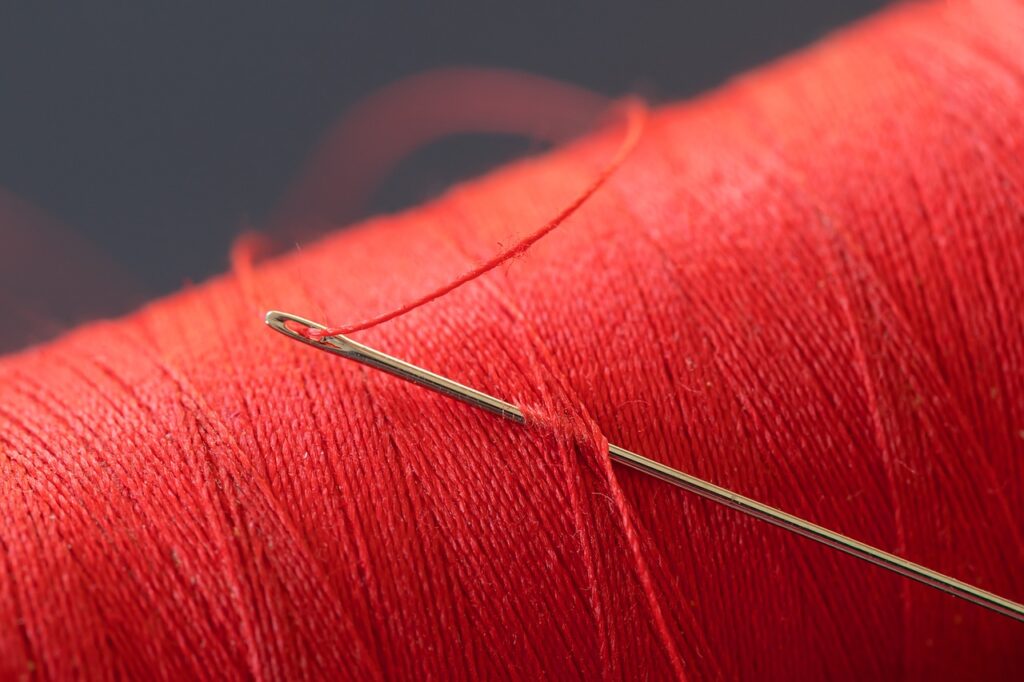
6. **Mitigating Physical Forces and Damage from Handling**Textiles are highly susceptible to damage from physical forces, leading to a range of issues including holes, tears, distortions, losses, and splits. One common problem arises from sharp creases along fold lines, where fibres are subjected to considerable stress, increasing the potential for fracturing. Tearing due to various stresses is also frequently observed in textile objects, especially delicate fabrics that might be overburdened by heavy ornamentation, causing distortion and tearing around decorative elements.
Handling is a primary instigator of damage in costumes and textiles. Historical textiles often appear deceptively strong, but their age, past wear, inherent fragility, and complex compositions (sometimes combining heavy and lightweight materials) make them extremely vulnerable. The familiarity of textiles as everyday objects can lead to them being handled more casually than other heritage items, accelerating their deterioration. Threads securing decorative elements like beads and sequins, already weakened by wear or prior degradation, are at high risk of failure and loss when handled.
Even when carefully handled, the process of mounting a costume on a mannequin can involve extensive manipulation, which can place undue stress on specific parts of the garment. Costumes on ill-fitting mannequins or heavy flat textiles displayed vertically without adequate support are prone to distortion due to the relentless pull of gravity. Furthermore, during transit, direct physical forces such as vibration or shocks can cause abrasion over time, gradually wearing away delicate fibres.
To mitigate these risks, preventive conservation emphasizes minimizing handling, ensuring proper support during display and storage, and carefully planning any necessary manipulation. Each interaction with a historical textile must be considered a potential source of damage, requiring trained personnel, appropriate tools, and meticulous care to preserve its structural integrity for generations to come.
Read more about: 15 Things Mechanics Really Wish You’d Stop Delaying on Your Car
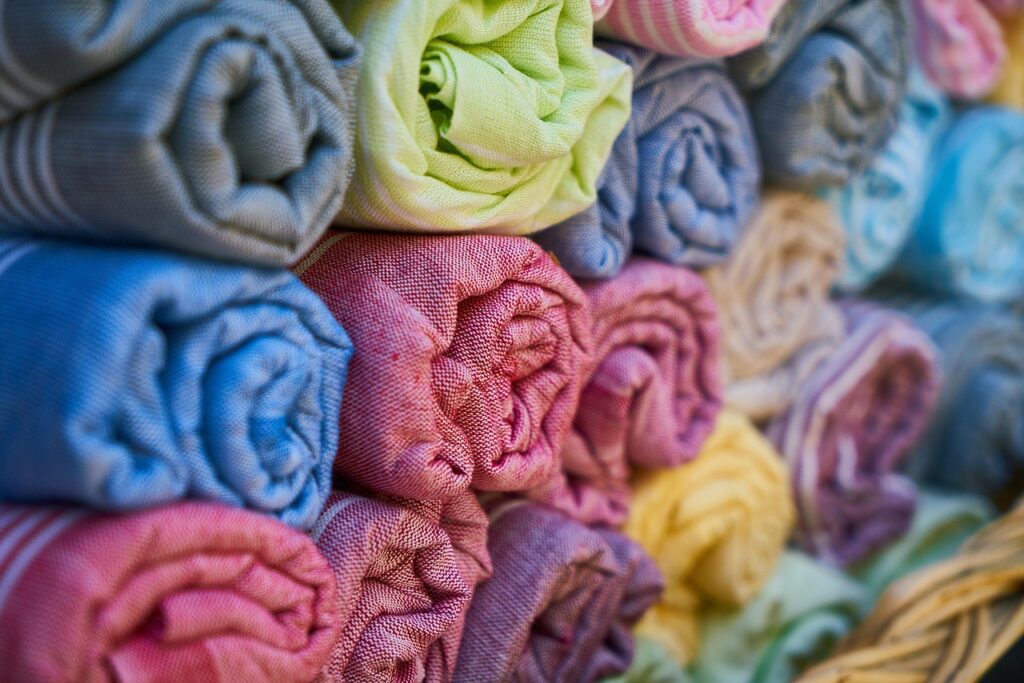
7. **Protecting Textile Collections from Water Damage**Water poses one of the highest and most severe risks to textile collections, with accidental wetting from floods, roof leaks, or other incidents having potentially catastrophic consequences. The range of damage caused by water is extensive and often difficult, if not impossible, to reverse if left untreated for an extended period. These damages include shrinkage of the fabric, a significant loss of flexibility, stretching, and tears—the latter often resulting from the inability of fibres to support the additional weight of absorbed water.
Beyond structural damage, water can also cause aesthetic and chemical harm. The formation of unsightly tide lines upon drying is a common issue, as are soiling from dirty water, stains from running dyes, and corrosion from contact with any metal elements present in the textile or its storage environment. Crucially, water creates an ideal environment for mould growth and contamination, introducing biological agents that can further degrade the textile.
When excess water penetrates natural and some manufactured fibres, they swell. This swelling not only stresses the fibre structure but also subjects them to accelerated deterioration from chemicals in their surroundings or from biological agents. Bacteria, which thrive in nearly 100% relative humidity (i.e., wet or almost wet conditions), may already be present on textiles from original use contamination or more recent contact with stagnant or floodwaters, exacerbating the damage.
Wool fibres are unique in their ability to absorb an enormous quantity of water. However, this high absorbency comes with a significant drawback: when wet, wool becomes extremely sensitive to mechanical damage. This makes handling wet wool textiles particularly hazardous. Effective preventive strategies against water damage include robust building maintenance, adequate climate control, emergency preparedness plans, and careful monitoring to detect and address any moisture issues promptly, thereby safeguarding these vulnerable collections.
Navigating the intricate landscape of textile preservation demands a comprehensive understanding not only of their inherent characteristics and the immediate physical threats, but also of the insidious environmental dangers that can silently degrade these historical treasures. As we move beyond the foundational aspects of textile composition and direct damage, the focus shifts to implementing tailored strategies that actively protect against pervasive environmental threats and meticulously curate diverse costume elements for posterity. This involves a diligent approach to monitoring the ambient conditions of storage and display, along with adopting specialized methodologies for safeguarding everything from delicate flat textiles to complex, multi-material costume accessories.
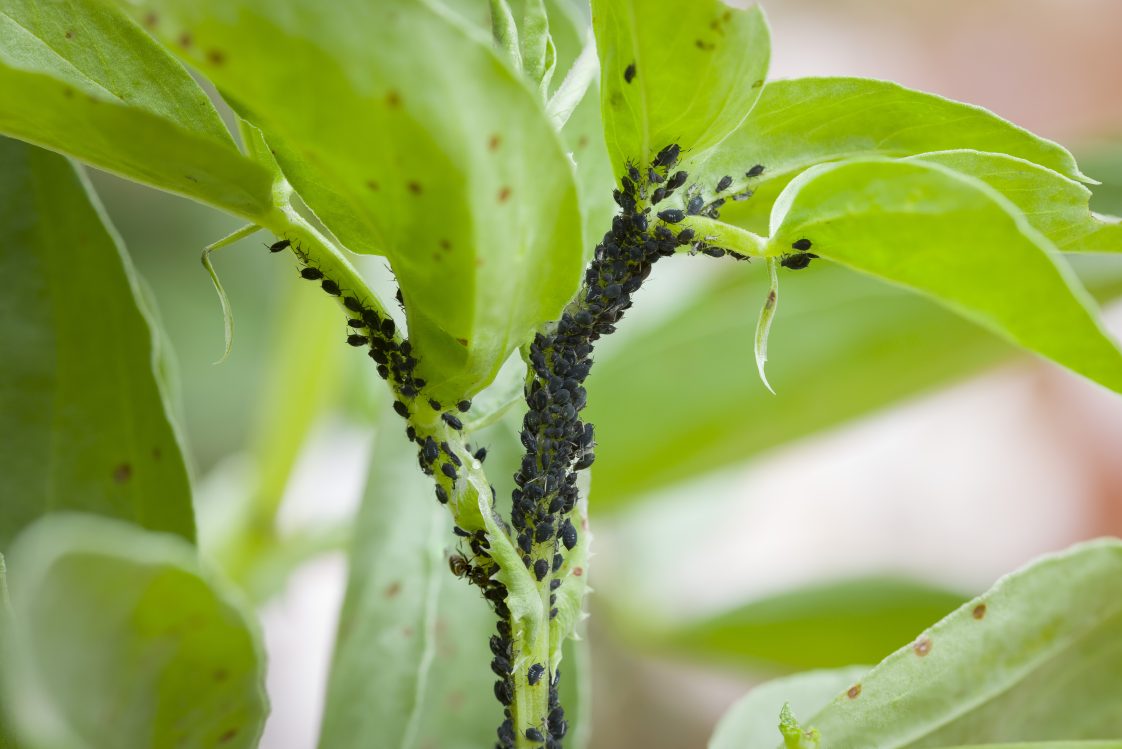
8. **Pests: A Persistent Threat to Textile Collections**Textile and costume collections, by their very nature, are highly susceptible to the relentless assault of various pests. These collections often inadvertently provide not only a ready food source for certain insects but also an ideal habitat, particularly in the undisturbed, dark environments typically favored for archival storage. This combination creates a significant risk that demands constant vigilance and targeted preventive conservation strategies to safeguard these irreplaceable artifacts.
Among the most notorious culprits are clothes moths and carpet beetle larvae, which specialize in perforating and consuming keratinous protein fibers such as wool, feathers, and furs. Their destructive feeding habits can lead to irreparable damage, leaving holes and weakened areas in historical garments and textiles. While these insects primarily target protein-based materials, they can also attack silk, cotton, and even synthetics if these fabrics are soiled or if they simply obstruct the path to their preferred food source.
Beyond the well-known textile pests, other unwelcome visitors like silverfish and cockroaches pose their own unique threats. These insects are attracted to sources of nourishment often found within textile collections, such as the starch sizing used in cotton fabrics or the paper materials used for interleafing and boxing. Their presence can result in gnawing, staining, and general degradation, undermining the structural integrity and aesthetic value of the objects. Effective pest management, therefore, relies on a combination of regular monitoring, stringent housekeeping, and integrated pest management techniques to minimize risks.

9. **Guarding Against Atmospheric Pollutants**While often invisible, atmospheric pollutants represent a significant and pervasive threat to the long-term stability of costume archives. Textiles are made from organic materials that are prone to natural processes of deterioration through exposure to ambient levels of dust and pollutants in the air. These airborne contaminants, ranging from microscopic particulate matter to various gaseous compounds, can silently accelerate the degradation of delicate fibers and alter the appearance of historical fabrics.
Particulate pollutants, such as dust, can accumulate on textile surfaces, not only obscuring their aesthetic details but also embedding abrasive particles within the fibers. This can lead to physical damage during handling or cleaning, and the dust itself can contain corrosive elements that react with the textile materials over time. Moreover, dust can absorb moisture, creating localized humid microclimates that encourage mould growth or chemical reactions.
Gaseous pollutants, including industrial emissions and even volatile organic compounds from storage materials, can initiate complex chemical reactions within textile fibers. These reactions can cause discoloration, embrittlement, and a general weakening of the material structure. The impact of these pollutants can be subtle and cumulative, often going unnoticed until significant damage has occurred. Implementing robust environmental controls, such as specialized air filtration systems, is therefore a crucial component of a comprehensive preservation strategy to mitigate these insidious threats.
Read more about: Guard Your Investment: 15 Worst Storage Mistakes That Could Ruin Your Classic Car Over a Decade

10. **The Perils of Light and UV Radiation**Light, particularly its ultraviolet (UV) component, is a powerful and destructive agent for textile collections, initiating a range of irreversible damages that can compromise both the structural integrity and aesthetic fidelity of historical objects. Textiles are exceptionally sensitive to elevated levels of light and UV radiation, which act as catalysts for the degradation of organic materials. This vulnerability necessitates careful management of illumination in exhibition and storage environments.
Exposure to light can cause significant fiber damage, leading to a general weakening and embrittlement of the textile. This photo-oxidation process breaks down the molecular bonds within the fibers, reducing their strength and making them more susceptible to physical damage. Over time, prolonged light exposure can transform a supple fabric into a brittle, fragile artifact that easily crumbles or tears, diminishing its ability to withstand even the most careful handling or display.
Aesthetically, light exposure is notoriously responsible for fading, where the vibrant hues of dyes and pigments gradually diminish, altering the original color scheme of the textile. Beyond simple fading, light can also cause changes in color, where certain dyes may shift to an entirely different shade or develop an unwanted cast. Furthermore, many textiles, particularly those made from cellulosic fibers, are prone to yellowing under prolonged light exposure, further distorting their historical appearance. These irreversible alterations underscore the critical need for strict light control, often involving low light levels and UV filtration, to extend the life of these precious collections.
Read more about: 14 Essential Strategies: Guarding Your Car’s Finish Against Summer’s Extreme Heat and Harmful UV Rays
11. **The Critical Balance: Temperature and Relative Humidity**The stability of temperature and relative humidity (RH) within archival environments is paramount for the long-term preservation of textiles, as fluctuations or consistently incorrect levels can induce significant and irreversible damage. Textiles are made from organic materials that are prone to natural processes of deterioration through exposure to ambient levels of light, temperature, humidity, dust, and pollutants in the air. Maintaining a stable and appropriate climate is thus a cornerstone of preventive conservation.
Incorrect temperatures, particularly those that are consistently high, accelerate the rate of chemical reactions within textile fibers. This speeds up the natural aging process, leading to a more rapid breakdown of materials and an overall reduction in the lifespan of the textile. While cooler temperatures generally slow down degradation, excessively low temperatures can also pose risks if accompanied by inappropriate humidity levels, potentially leading to condensation upon warming or increased brittleness.
Similarly, incorrect relative humidity levels present a dual threat. High RH (above 65-70%) creates an ideal breeding ground for mould growth and encourages insect activity, both of which can cause catastrophic damage to textiles. It can also lead to the swelling of natural and some manufactured fibers, stressing their structure and accelerating deterioration. Conversely, consistently low RH (below 35-40%) can cause desiccation and embrittlement, making fibers rigid and prone to cracking or shattering, especially for delicate materials like silk or ancient cellulosic textiles. The interplay between temperature and humidity is crucial; a stable environment within a recommended range (typically 50% RH and 18-20°C, though specific ranges vary by collection and conservator advice) is the goal for optimal preservation.
Read more about: The Great Cuke Conundrum: Unwrapping the Mystery Behind Plastic-Wrapped English Cucumbers for Curious Minds
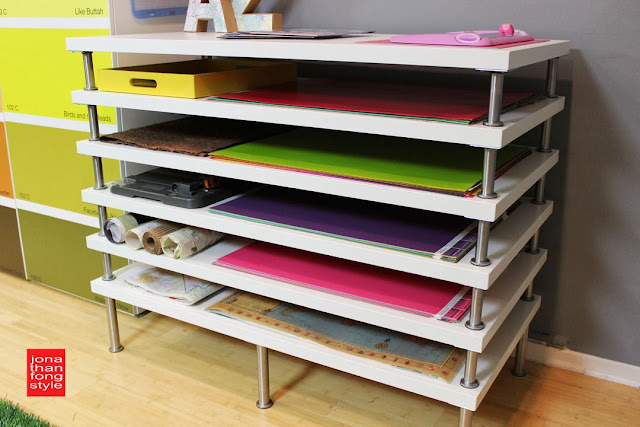
12. **Tailored Storage Solutions for Flat Textiles**Effective preservation extends beyond environmental control to the physical storage methods employed, with tailored solutions being essential for different textile forms. For small flat textiles, such as embroideries and handkerchiefs, flat storage is unequivocally ideal, as it entirely eliminates strain on the object. Whenever feasible, choosing a box or drawer spacious enough to accommodate the textile without folding is the preferred method, utilizing either buffered tissue for undyed cellulosic fibers or unbuffered tissue for silk, wool, and all dyed textiles, as well as mixed or unknown fibers, or washed cotton sheeting as a lining. When storing multiple items in one box due to space limitations, the heaviest items should be placed at the bottom, with acid-free tissue separating each textile. Very fragile small textiles, like archaeological fragments, require specialized mounts consisting of an acid-free board covered with polyester felt and cotton fabric, with a hinged window mat, to provide critical protection.
Large flat textiles, including quilts, carpets, shawls, and table linens, are generally best preserved using rolled storage, a method that effectively prevents creasing and offers complete, uniform support. Painted textiles, such as flags, should always be stored flat whenever possible and never folded. For rolled storage, an archival quality storage tube, at least 3 inches in diameter (larger for heavier items), should be selected, extending 6 to 8 inches beyond the textile’s width. The tube must be covered with acid-free tissue, with additional tissue rolled onto it to support the textile. Most textiles are rolled in the warp direction, and pile textiles like rugs must be rolled with the nap, typically facedown so the obverse is on the outside of the roll, ensuring no creases form during the process. Fragmented textiles or those with sharp surface decoration benefit from interleaving with tissue during rolling, though this is generally avoided for smooth textiles. Once rolled, the textile is covered with acid-free tissue or washed muslin, secured with cotton twill tape beyond the textile’s ends, and labeled with accession numbers on the tube and ties, and identification information sewn onto the muslin covering. Suspending the tube on brackets or a dowel is recommended to eliminate pressure on the textile from shelf storage.
While rolled storage is preferred for large flat textiles, folded storage in a box or drawer may be a necessary alternative for items that are not flat enough to roll or possess bulky surface decoration. In such cases, a box large enough to minimize folds should be chosen and lined with acid-free tissue or washed cotton sheeting. The textile is then carefully folded to fit the box, making as few folds as possible, with all folds padded using rolled acid-free tissue or tubes of polyester batting covered with washed muslin or stockinette. This meticulous padding is crucial to prevent permanent creasing and strain on the fabric, ensuring the textile rests comfortably within its protective environment before the lining is folded over and the box is labeled.
Read more about: The Nanotech Revolution: 15 Everyday Products Poised for Transformation Within Five Years
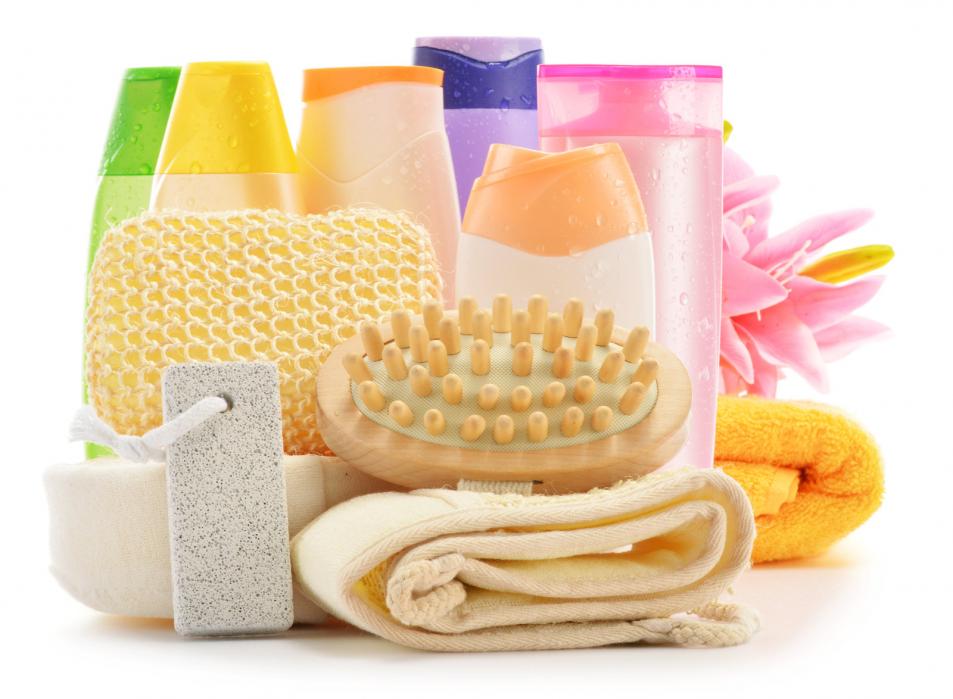
13. **Specialized Care for Garments and Accessories**The preservation of garments presents a unique set of challenges due to their inherent three-dimensional structure and often complex construction, while costume accessories demand bespoke approaches given their diverse material composites. For garments, hanging storage is generally preferred if a costume is suitable, as it avoids the creasing associated with boxed storage. However, costumes in poor condition, those with heavy embellishments, bias-cut garments, or items with weak shoulder areas are unsuitable for hanging and should be boxed. When hanging is appropriate, garments must always be placed on padded hangers, crafted with wide shoulders covered in polyester felt or batting and finished with washed cotton fabric or stockinette, with additional support from twill tapes stitched into waistbands and tied to the hanger neck. Skirts and pants can utilize padded commercial skirt hangers, and all hung garments should be protected from dust and light with cotton muslin or Tyvek® garment bags, ensuring they are not crowded to prevent creasing.
For garments that must be stored in boxes, large costume storage boxes are available in various sizes, ideally longer than the garment. After lining the box with acid-free tissue or washed cotton fabric, the garment is arranged on a flat surface in its natural position, with vertical skirt folds placed to avoid fabric strain, and as few folds as possible made to fit the box. If a garment is longer than the box, a crosswise fold is necessary, positioned to cause minimal fabric strain, and all folds are padded with acid-free tissue or polyester batting tubes covered in washed cotton fabric or stockinette. Sleeves, however, are generally not padded to prevent damage during insertion and removal. Garments should be gently laid in the box, the lining folded over, and stacking avoided to minimize creasing.
Costume accessories, often composites of various materials including plastics, require careful consideration. Unbuffered tissue is best for isolating and wrapping individual items, while boxes, whether buffered or unbuffered, should always be lined with acid-free tissue or washed cotton fabric. Fans, unless in constant use, should be wrapped in acid-free tissue and stored in partitioned archival boxes, with consultation with a conservator advised for fragile or painted examples. Gloves are stored flat in archival boxes, interleaved with acid-free tissue. Shoes can be stored in archival boxes, on shelves, or in drawers, padded with archival tissue for support, with delicate shoes requiring custom padding designed by a conservator, stored upright or on their sides for taller items, and unsupported ribbons secured with loose twill tape.
Hats necessitate support to prevent resting on the brim or stressing the crown; this can be achieved with acid-free tissue padding or a support made from acid-free corrugated board padded with polyester batting and covered with acid-free tissue, noting that cotton fabric is generally unsuitable for historic hats. Handbags, constructed from a multitude of materials, should be loosely stuffed with acid-free tissue to retain shape, gently wrapped if they have exterior decorations, and stored in individual archival boxes or trays with compartments lined with acid-free tissue. Finally, while technically not textiles, jewelry often accompanies costumes and should be individually wrapped in acid-free tissue or placed in padded wells in small artifact boxes or divided trays, avoiding loose batting. Silver jewelry benefits from storage in Pacific Silvercloth pouches to prevent tarnishing. Throughout all these specialized preservation efforts, it is highly recommended to consult a textile conservator, especially for valuable or historic collections, to ensure the most appropriate and effective care.
Read more about: Unearthing Silver Screen Secrets: 15 Highly Valuable Hollywood Memorabilia You Might Find in Your Attic
The journey through the preservation of costume and textile archives reveals a profound dedication to safeguarding not just objects, but the stories, craftsmanship, and cultural narratives they embody. From understanding the intrinsic vulnerabilities of fibers and structures to meticulously controlling environmental agents and implementing precise storage strategies, every step is a testament to the commitment to future generations. These practices ensure that the rich tapestry of human history, woven into every thread and stitch, remains vibrant and accessible, allowing these delicate artifacts to continue to inspire and educate for centuries to come.


